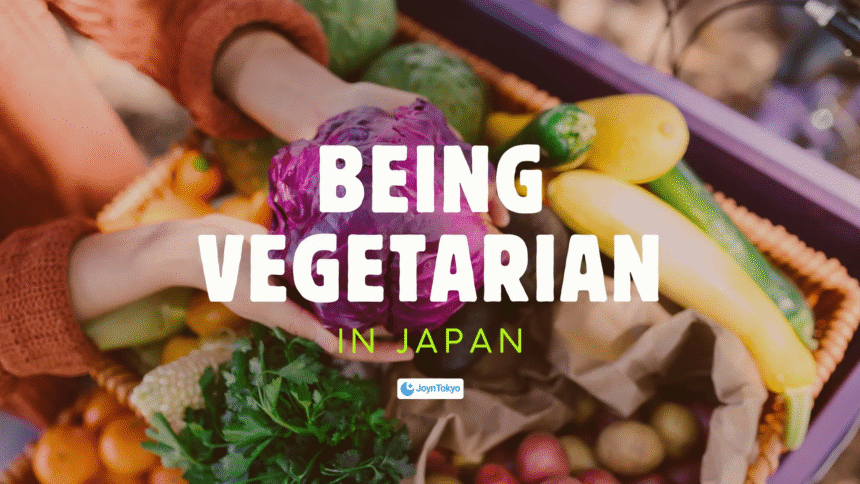Japan’s reputation for fish‑forward fare hides a quietly flourishing plant‑based movement. Master a handful of menu kanji, arm yourself with a vegetarian card and trust modern apps: thriving as a vegetarian in Japan is more than possible — it is deliciously rewarding.
Japan’s Evolving Vegetarian Landscape
The last five years have seen a doubling of eateries with clearly labelled vegetarian menus, while supermarkets now stack soy‑based “meat” alongside centuries‑old tofu. Government consumer surveys put Japan’s vegetarian population at roughly 2 – 3% in 2024, yet inbound tourism has pushed hotels, bento counters and even izakaya chains to develop meat‑free sets. Search filters on HappyCow, Gurunavi Green and the Michelin Guide together surface 900‑plus vegetarian‑friendly venues nationwide—proof that plant‑based dining is no longer a curiosity.
Roots of Plant‑Centred Cuisine
Long before macrobiotic cafés opened in Tokyo, Buddhist monks created shōjin ryōri, an elegant seasonal cuisine entirely free of animal products. The Meiji era’s embrace of meat altered the national palate, but temple kitchens, rural homes and vegetarian ryokan preserved plant‑centred dishes. That heritage lives on in today’s konbu‑based dashi and Japan’s national fondness for soy.

2025 Snapshot: From Temples to Konbini
Authentic temple meals flourish in Kyoto’s Nishijin district, while convenience stores now stock onigiri labelled 植物由来 (plant‑derived) and salads dressed without bonito. Recognising this lineage helps you spot naturally vegetarian options even when the menu is only in Japanese.

Day‑to‑Day Eating Strategies
Staying vegetarian in Japan is less about hunting for a rare “100% vegan” sign and more about smart decoding of labels and venue types.
Reading Menus & Labels
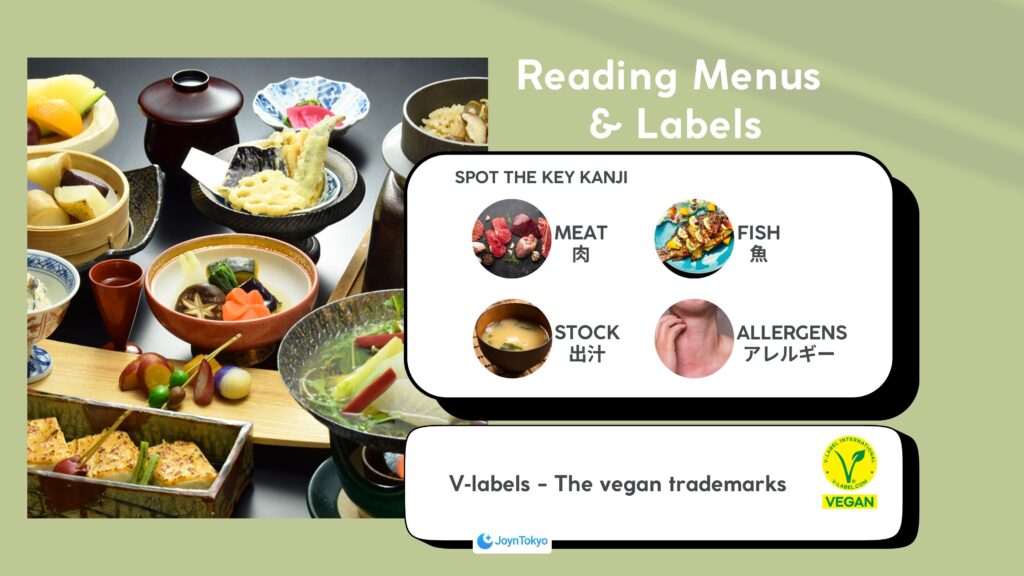
- Spot the key kanji: 肉 (meat), 魚 (fish) and 出汁 (stock).
- Packaged foods list アレルギー (allergens); if fish or chicken stock appears, move on.
- Since 2024, voluntary green V‑labels have begun to appear on ready‑meals—perfect for speed‑scanning konbini shelves.
Choosing Restaurants Wisely
In the cities, filter by ベジタリアン対応 on Gurunavi or use HappyCow’s offline map. Reliable chains include Ain Soph, Mr Farmer and Pronto’s Vegan Plate. Outside metropolitan areas, temple shōjin ryōri or yakuzen (medicinal) restaurants provide consistent meat‑free sets.
Shopping & Konbini Hacks
Combine FamilyMart’s soy kara‑age, 7‑Eleven’s plum‑rice onigiri and Lawson’s salad bowls with a microwavable pack of brown rice for a balanced lunch. Supermarkets offer budget staples such as plain udon, natto and seasonal produce.
Communication Toolkit
Even in cosmopolitan Tokyo, staff may think “vegetarian” includes fish. Clear, polite communication removes the guesswork.
Essential Phrases
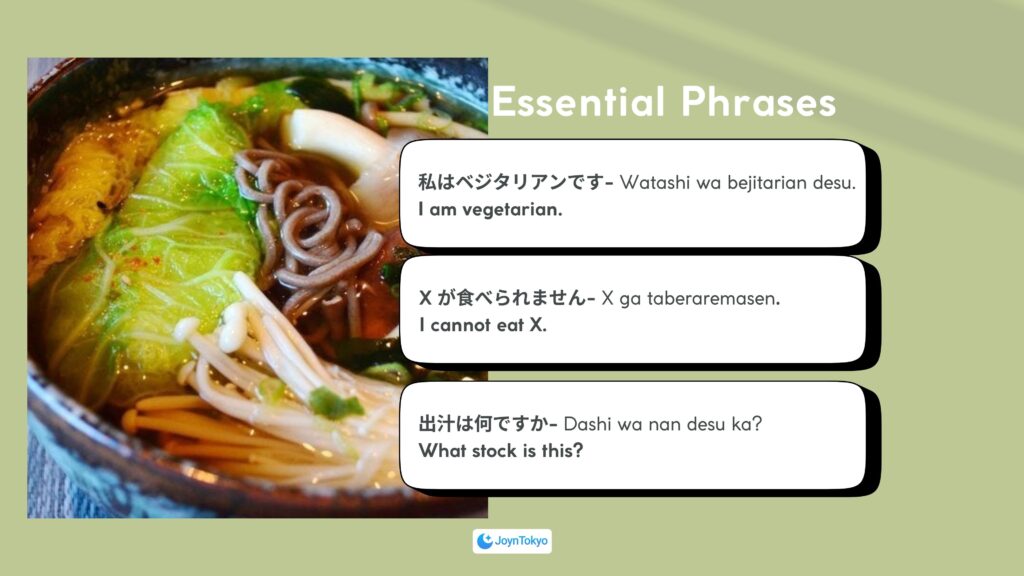
- 私はベジタリアンです。 Watashi wa bejitarian desu. – I am vegetarian.
- X が食べられません。 X ga taberaremasen. – I cannot eat X.
- 出汁は何ですか。 Dashi wa nan desu ka? – What stock is this?
Cards & Allergy Charts
Print a vegetarian card outlining your restrictions in Japanese (templates abound online) and present it before ordering. Many chains carry an アレルギー表 (allergy chart); ask: “アレルギー表はありますか?”
Etiquette Tips
Smile, bow lightly, and thank staff for accommodating you: “お手頃にありがとうございます” works wonders and often earns an extra helping of vegetables.
Tokyo’s Vegetarian Hotspots (2025)
Fine Dining
Daigo (Atago) – Two‑Michelin‑star shōjin kaiseki; seasonal plates from ¥14,000.

Itosho (Azabu‑Jūban) – Sesame‑focused omakase served since 1960.

Casual & Café
Ain Soph. Journey (Shinjuku) – Pancake stacks and tofu burgers, fully plant‑based.
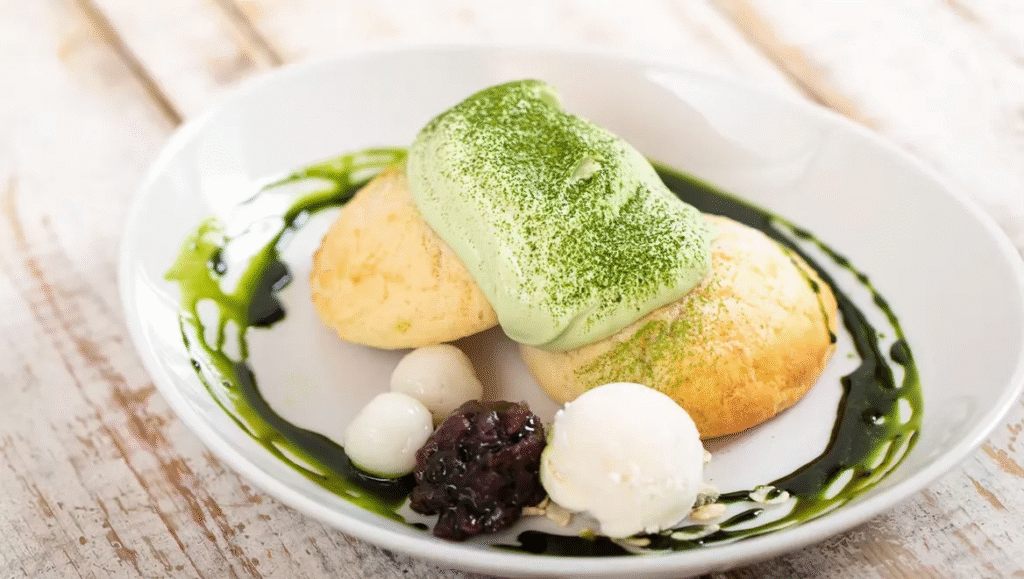
Soranoiro (Kojimachi) – Rainbow‑bright vegetable ramen.

Budget & Grab‑and‑Go
T’s Tantan (Tokyo Station) – Vegan tantan‑men under ¥1,000—perfect between Shinkansen.
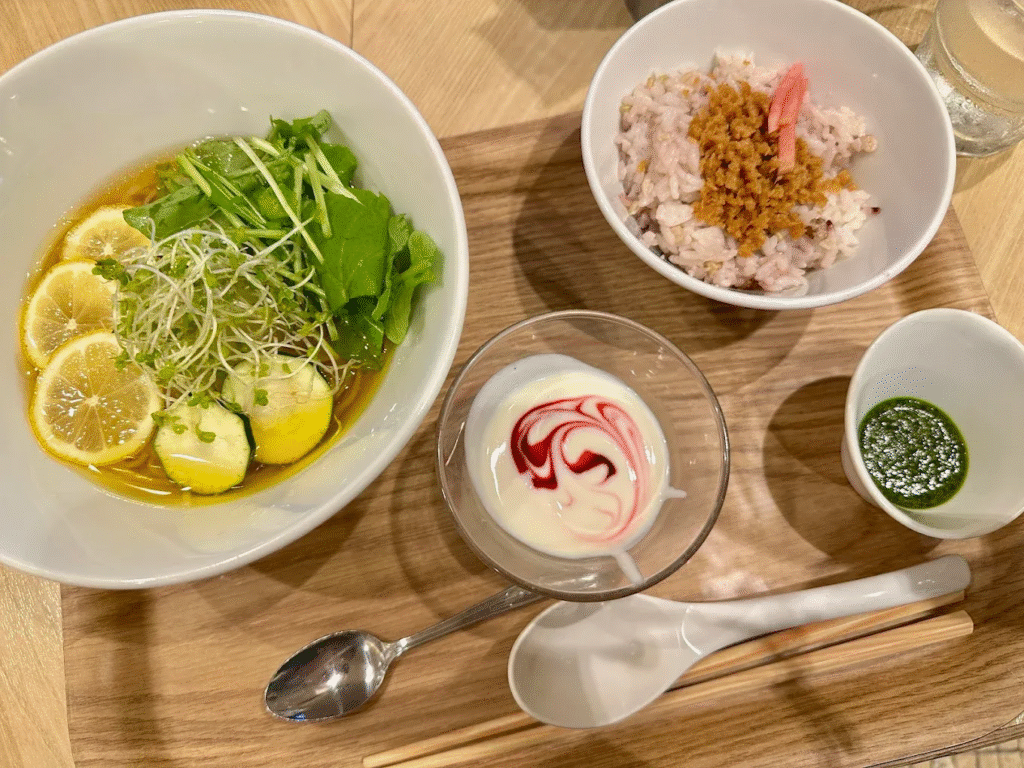
Brown Rice by Neal’s Yard (Omotesandō) – Organic set lunches around ¥1,800.

Living Vegetarian Beyond Mealtimes
Work & Social Gatherings
Give the 幹事 (kanji, organiser) a heads‑up: “ベジタリアンのメニューをお願いします.” Many chains now stock soy kara‑age and grilled vegetables. Carrying a small snack avoids awkward hunger at yakiniku joints.
Bento Preparation
A thermal jar filled with miso‑based vegetable soup and rice, plus edamame, pickles and fruit, keeps lunch below ¥500.
Domestic Travel Tips
On trains, look for Sansai (mountain vegetable) or Shojin ekiben. When booking rural ryokan, request meat‑free meals in advance; hosts are usually happy to create tofu‑centred kaiseki.
Community and Resources
Online Networks and Apps
Facebook group “Tokyo Vegan/Vegetarian” and LINE open‑chat “Plant‑Based Japan” answer ingredient questions in minutes.
Books & Classes
Read The Enlightened Kitchen for an English‑language guide to shōjin, or join AirKitchen experiences to master inari‑zushi from scratch.

Festivals & Markets
The Tokyo Veg Life Festival (May) and Vegan Gourmet Festival (autumn Osaka & Nagoya) showcase cruelty‑free food, sustainable fashion and zero‑waste workshops—ideal for expanding your social circle.
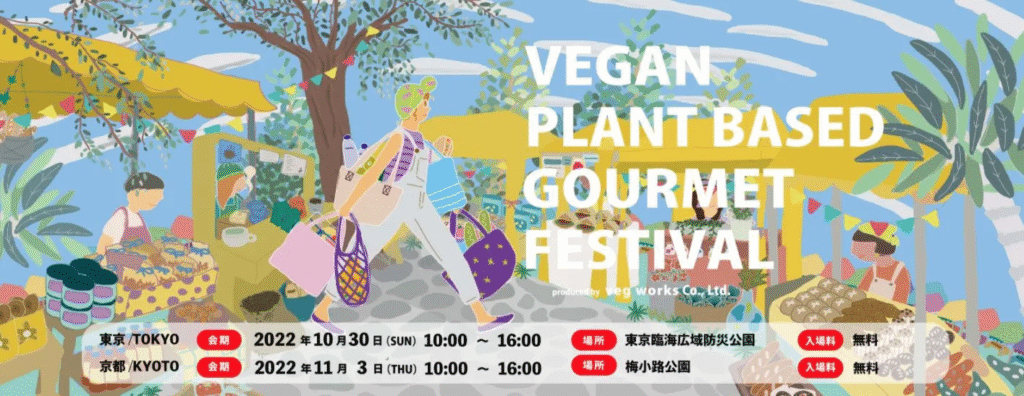
Key Takeaways & Action Checklist
Japan’s fish‑heavy food culture masks a rising tide of vegetarian options. By learning core kanji, carrying a vegetarian card and leveraging apps, you can enjoy everything from temple kaiseki to konbini suppers.
More Must Know Food Restrictions in Japan
Check out our related articles on the Japanese society adopting to food restrictions!

